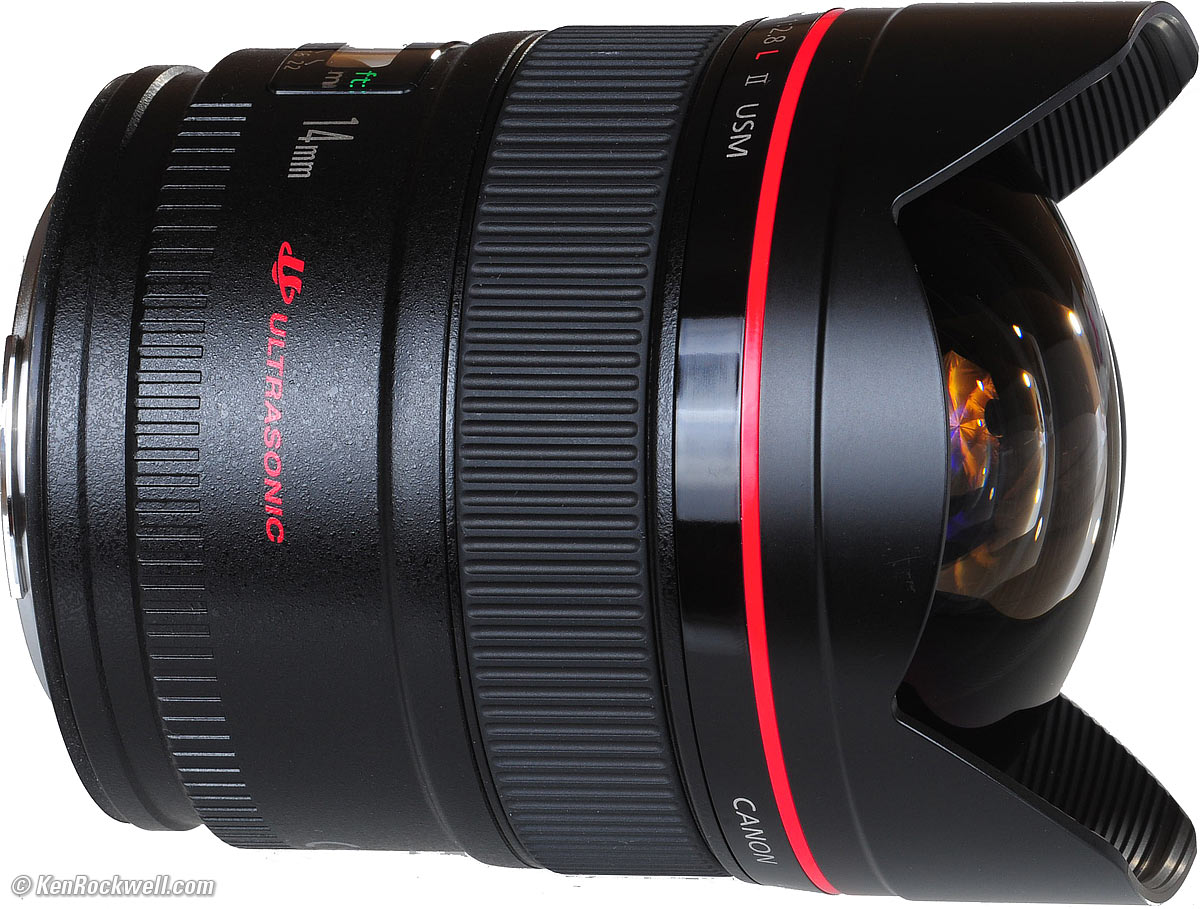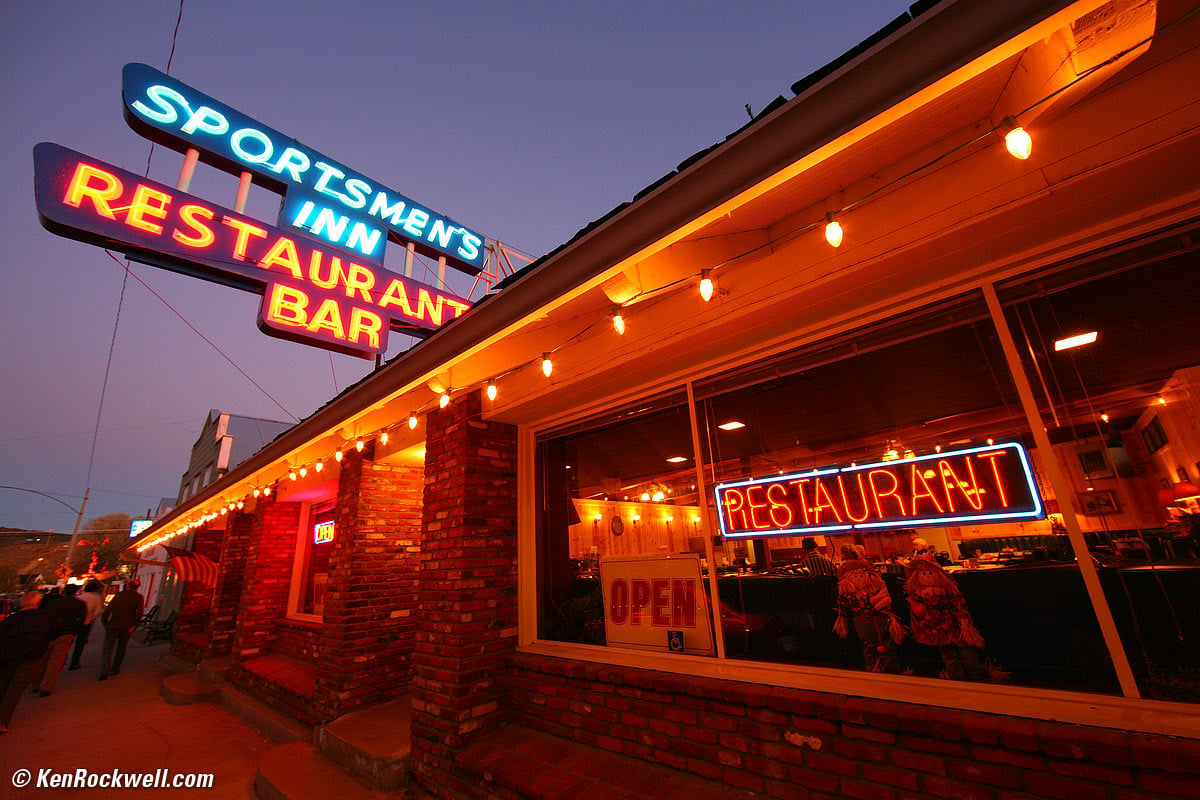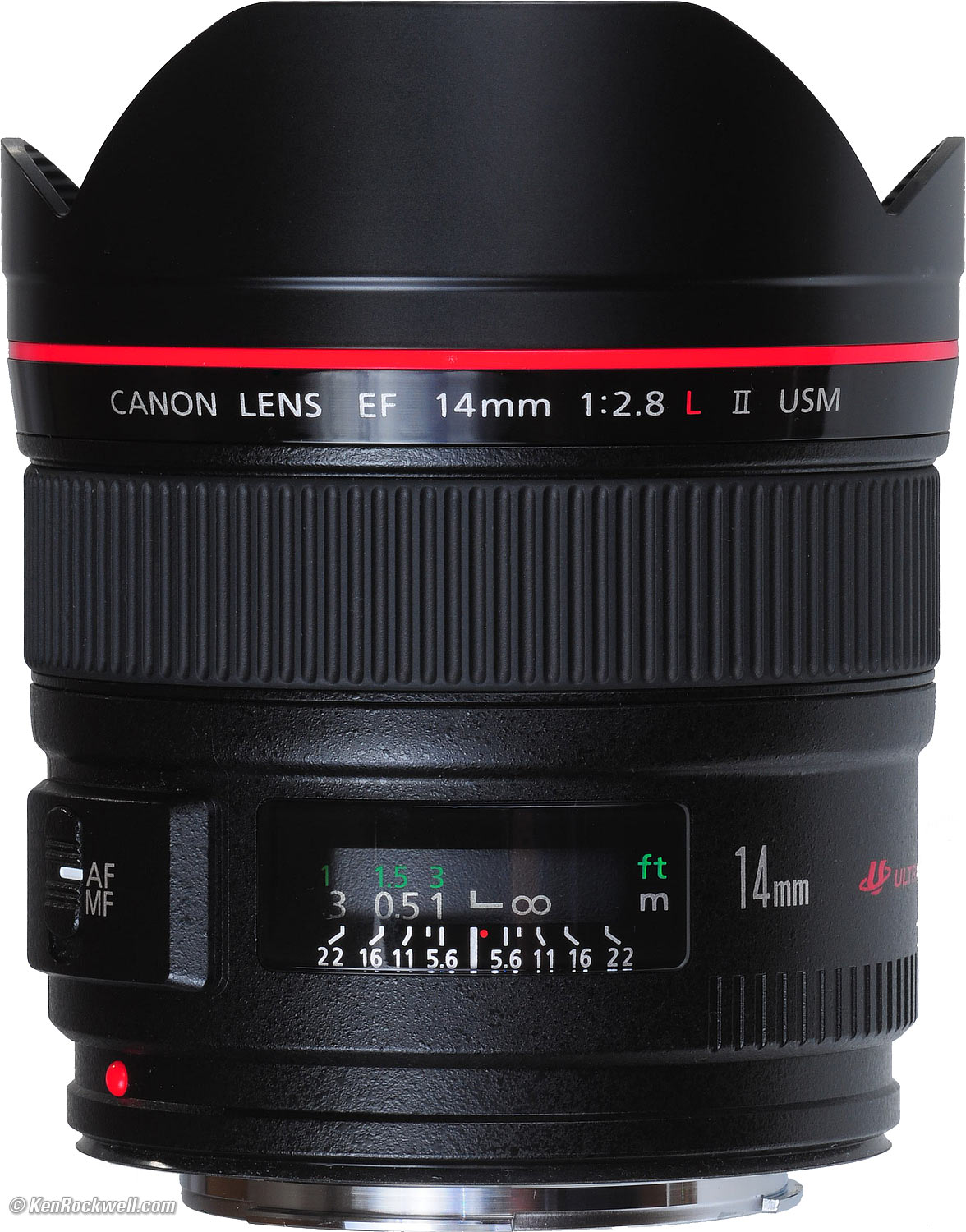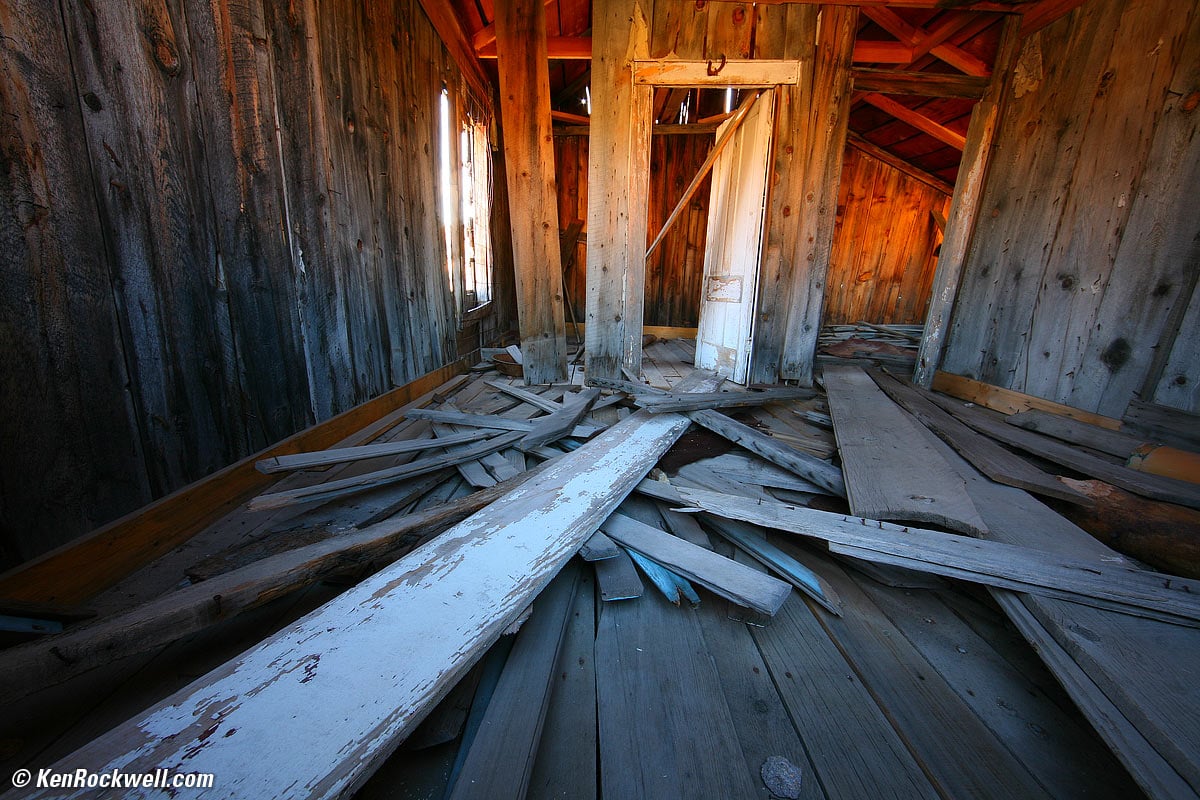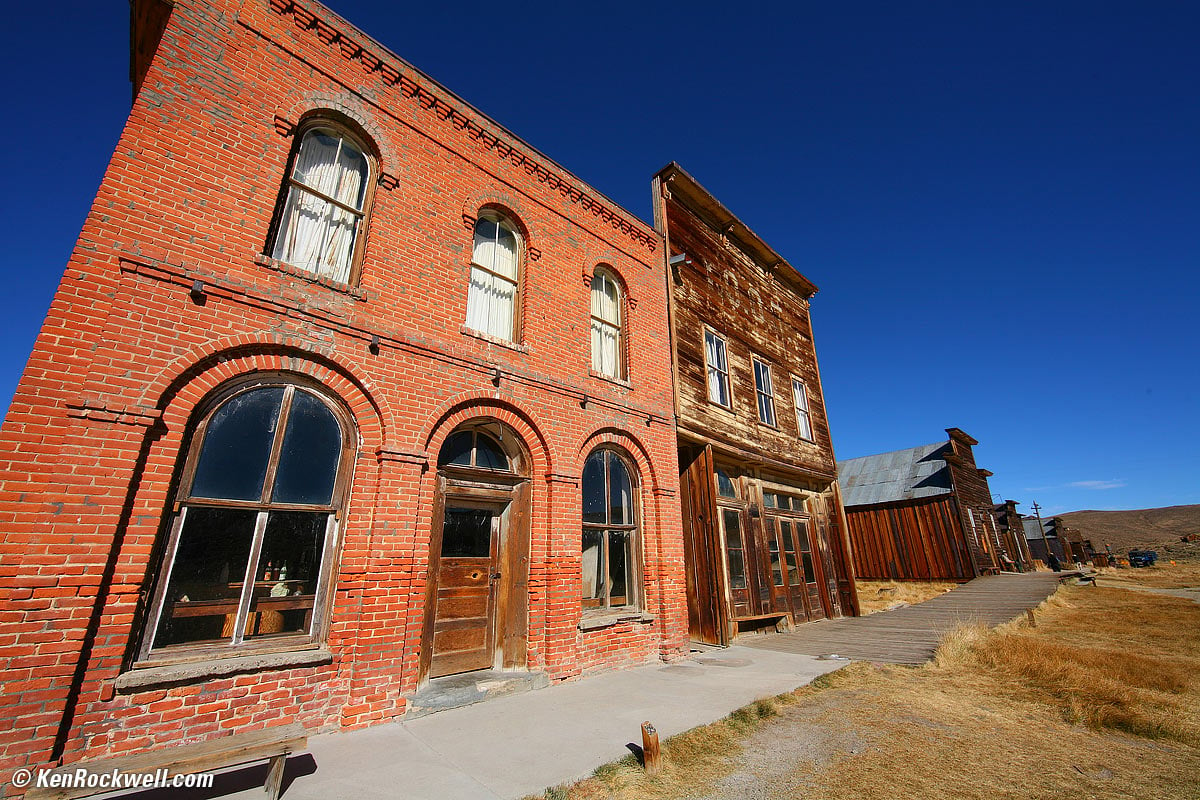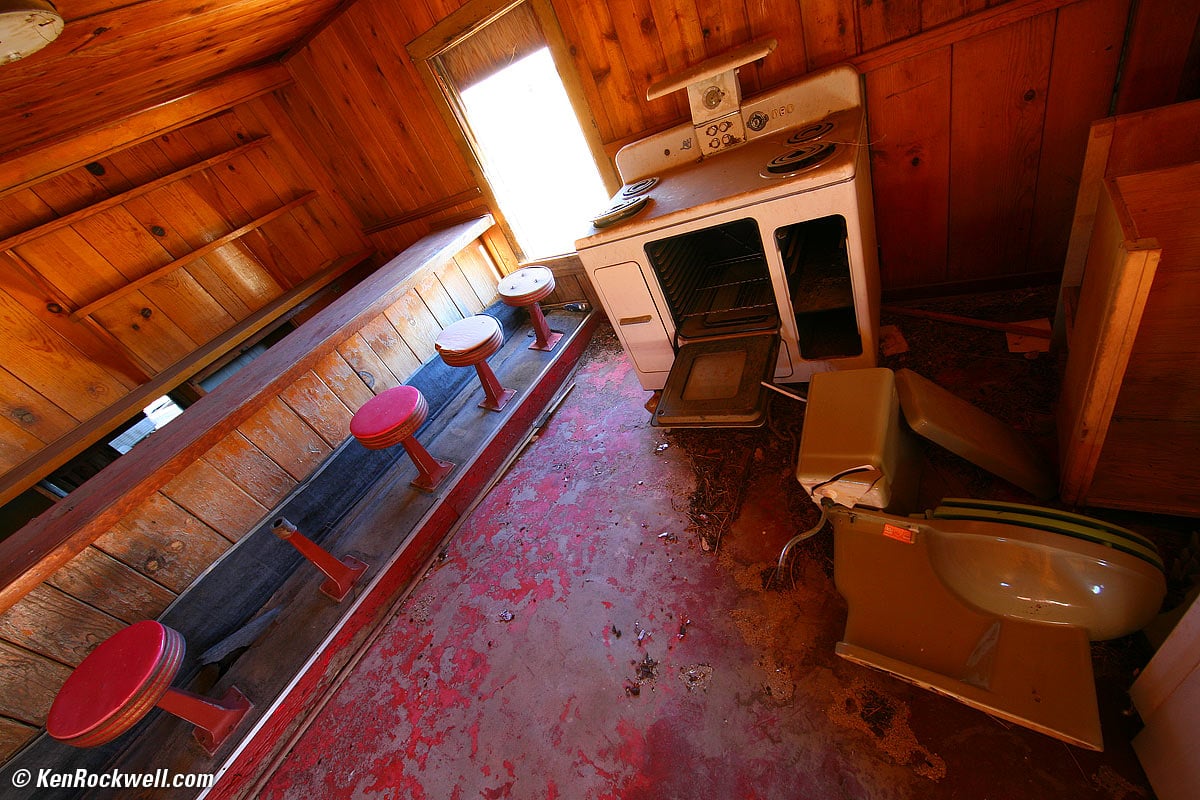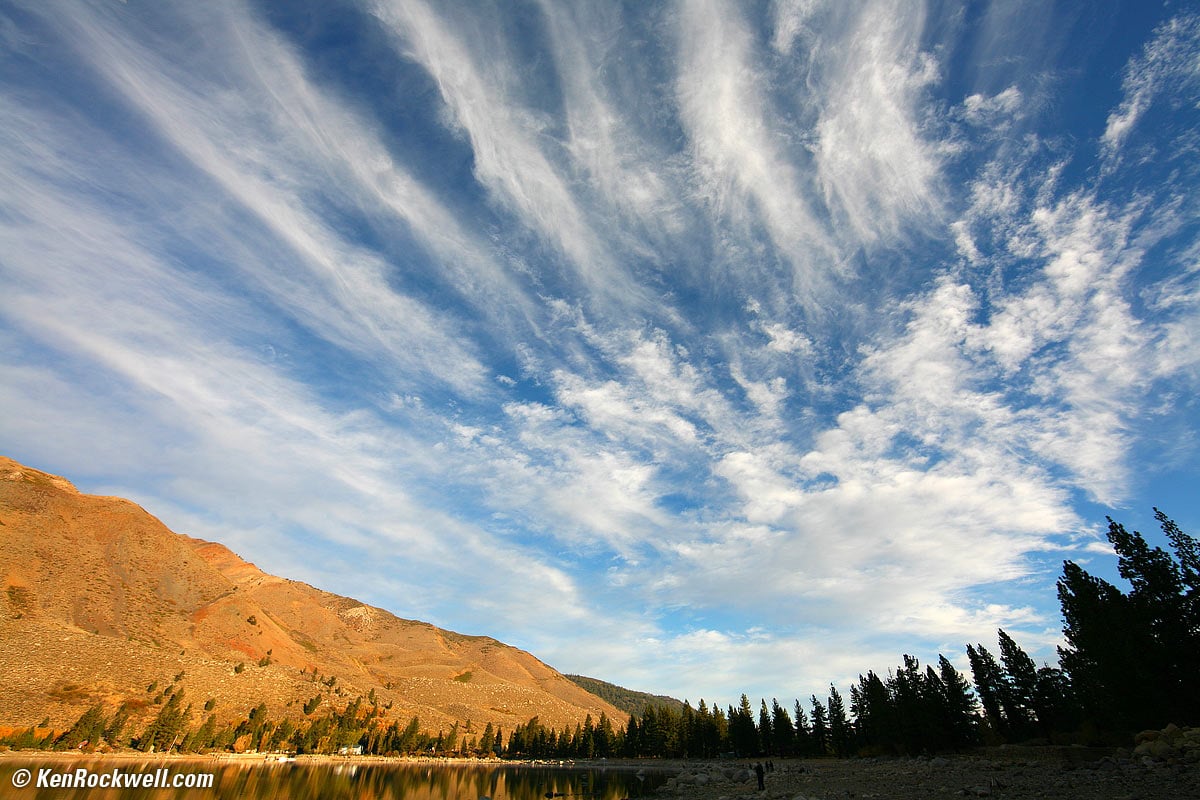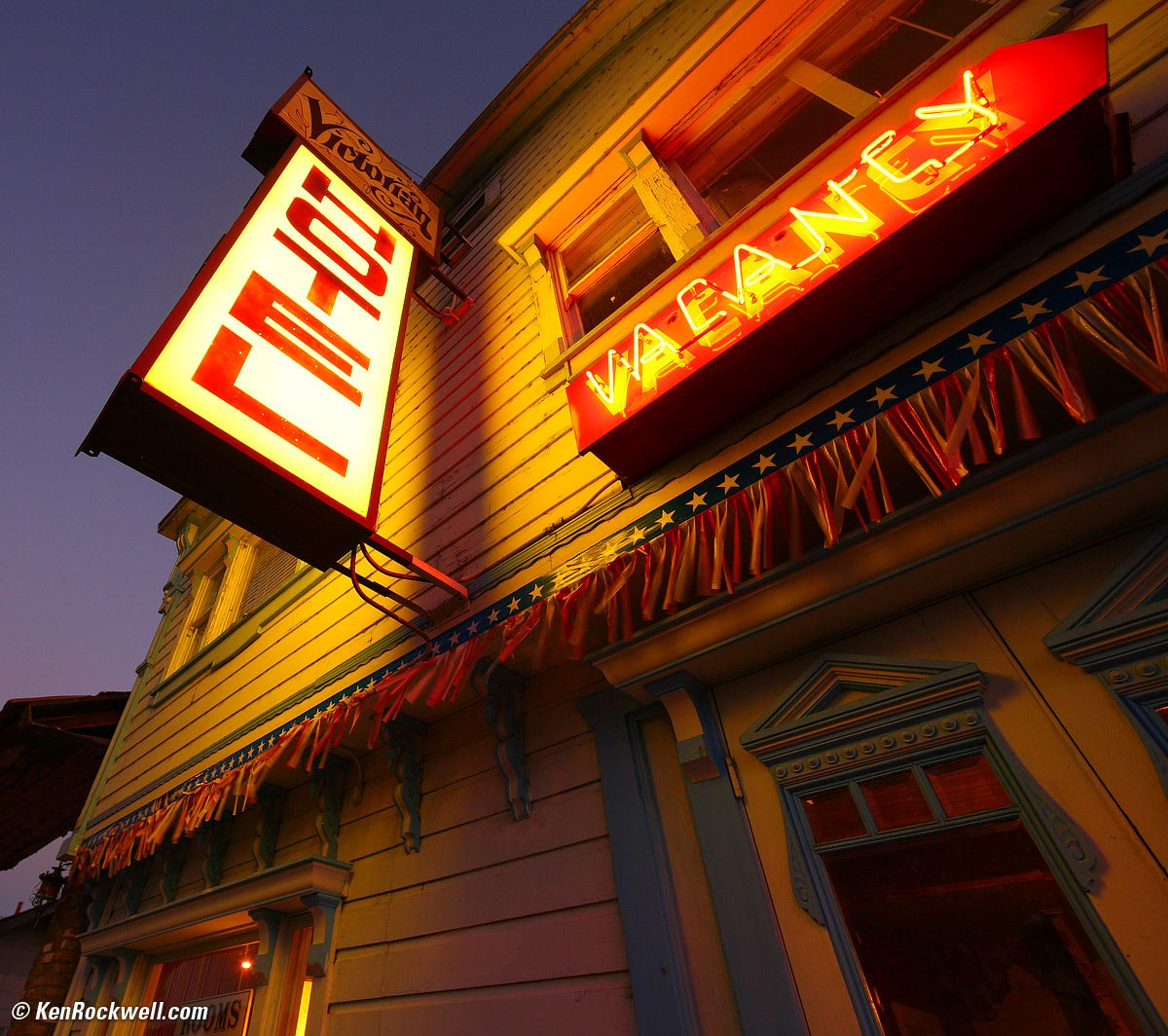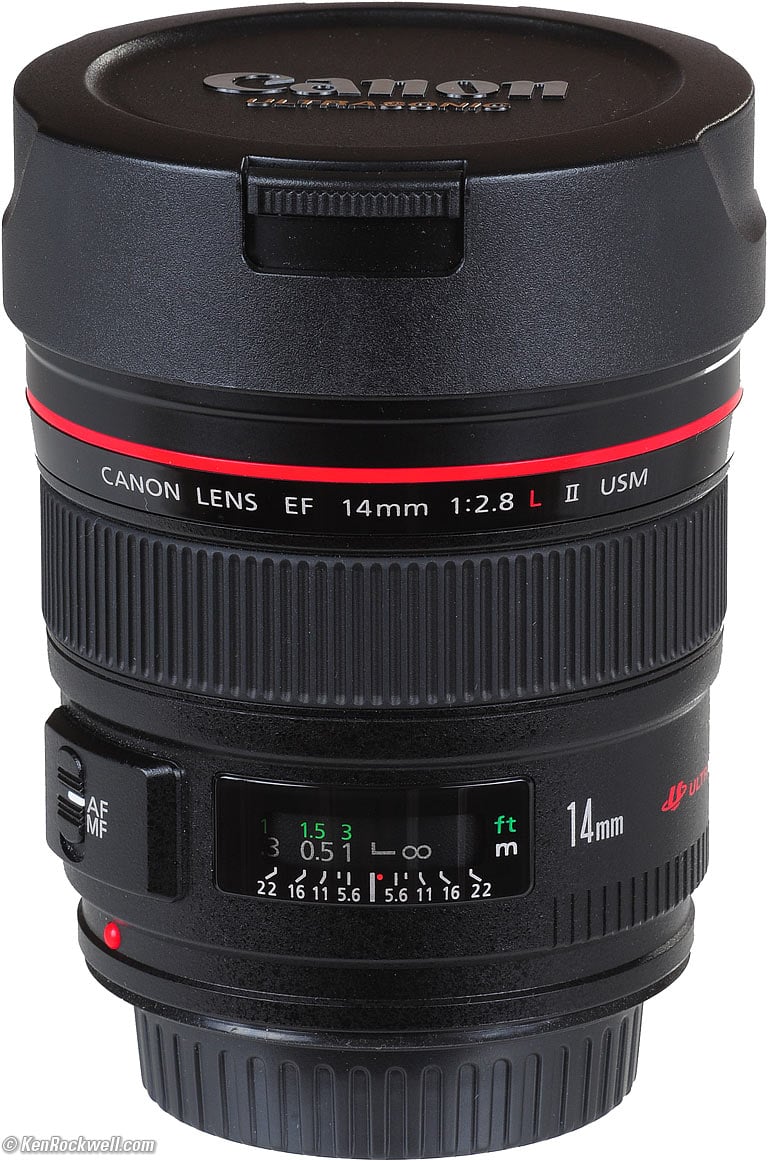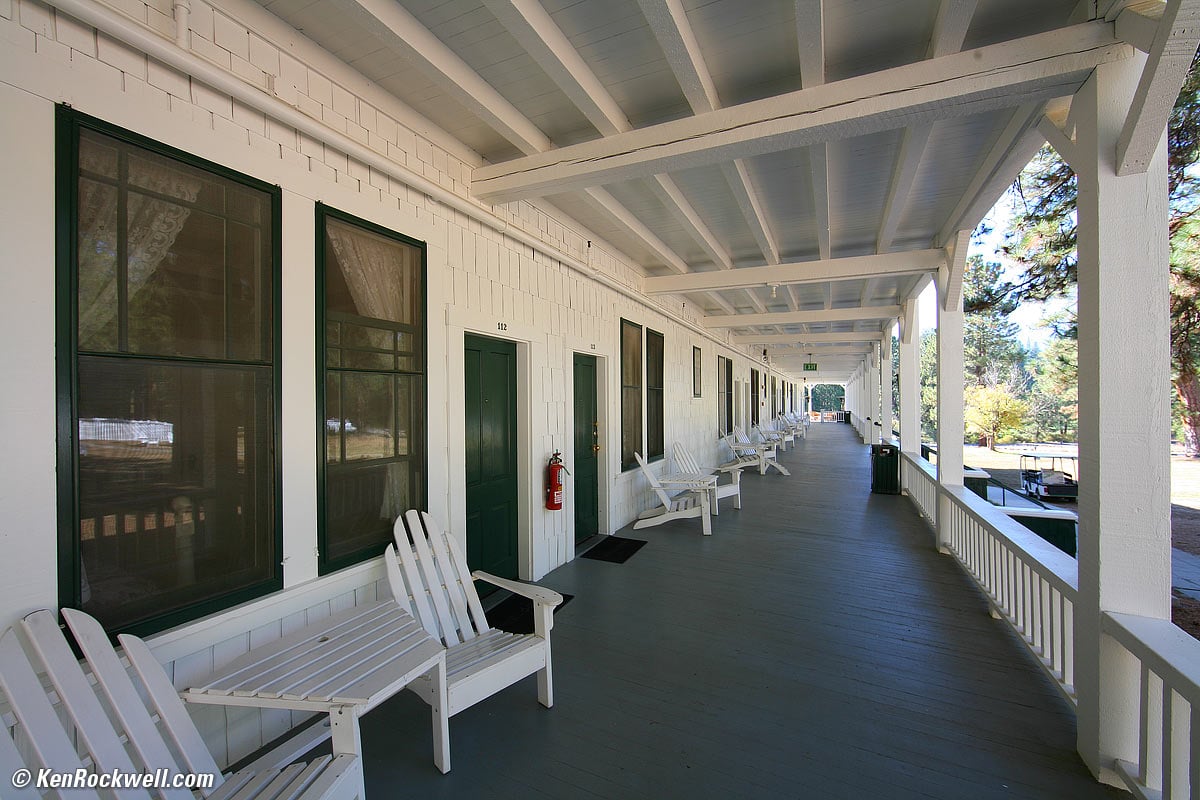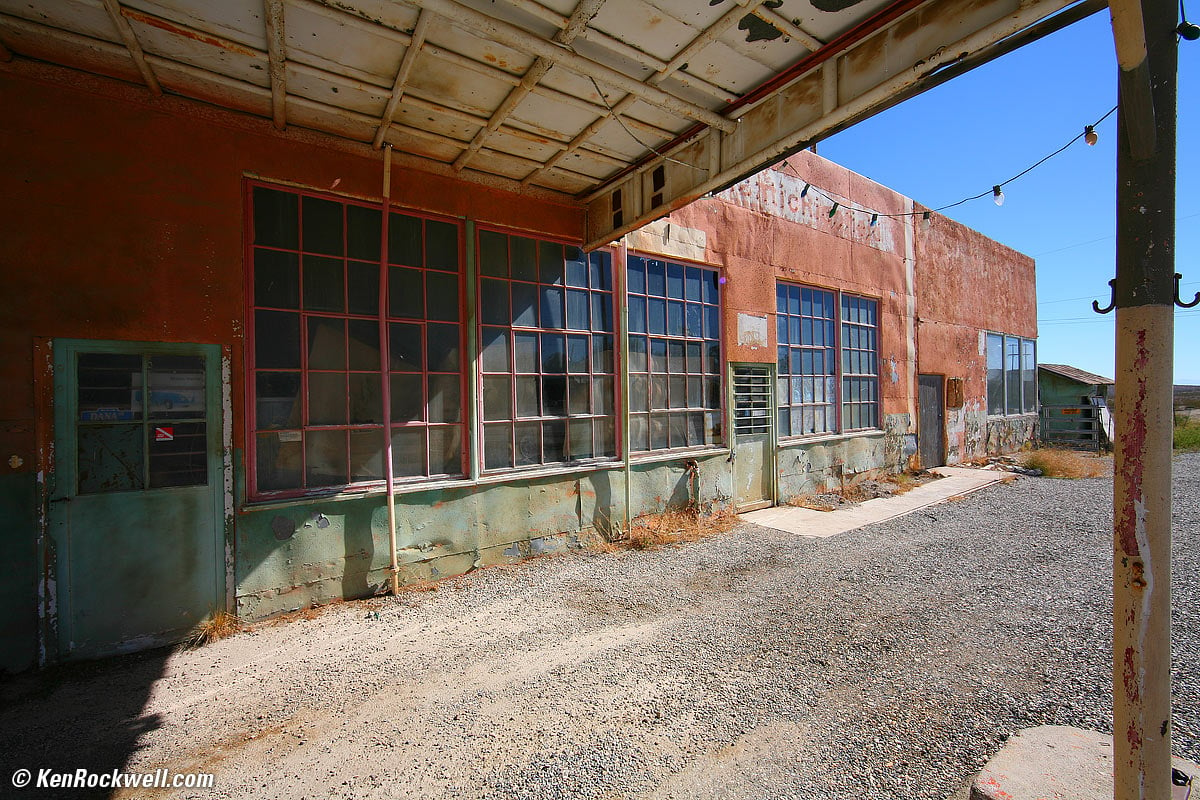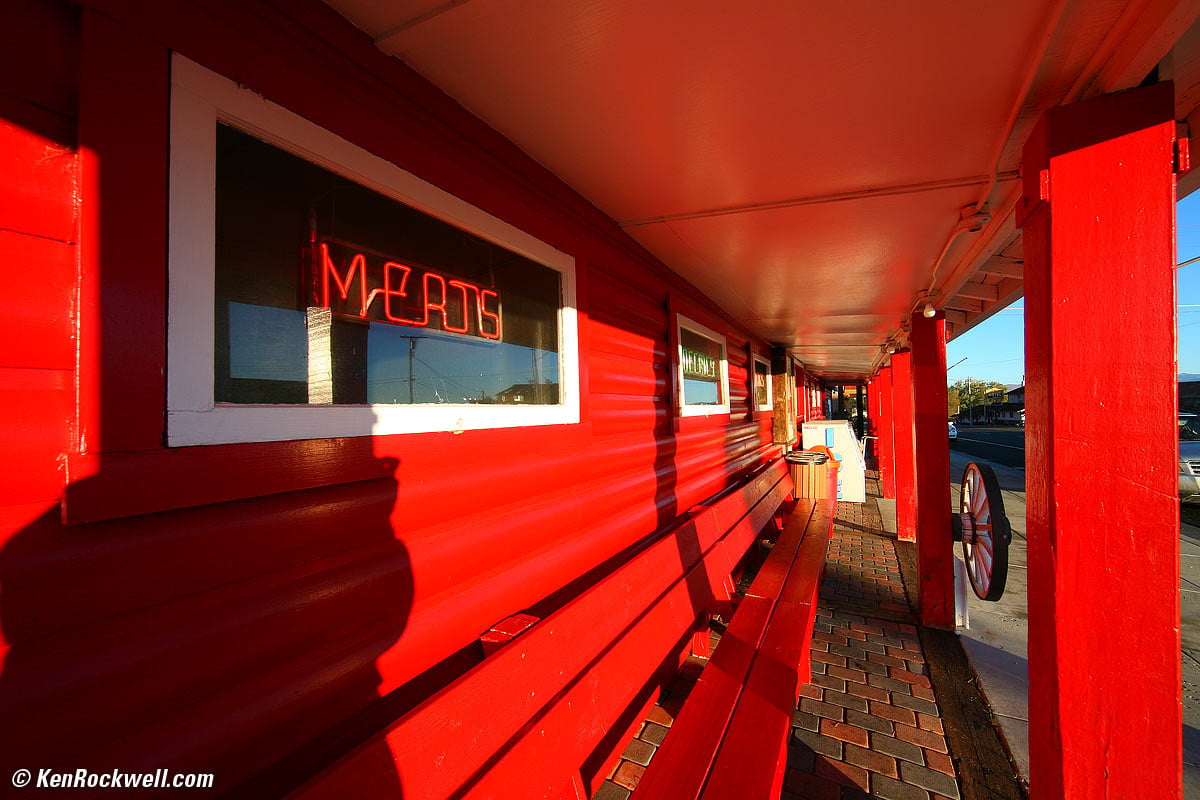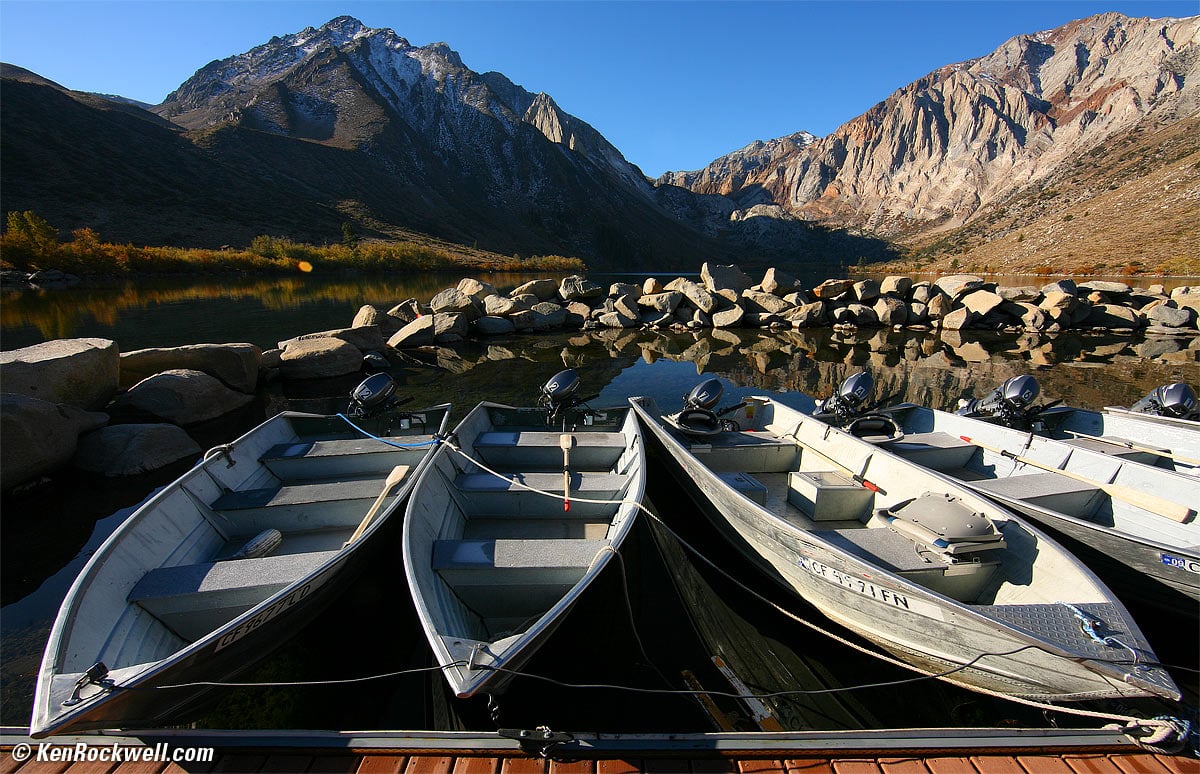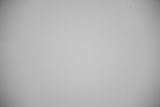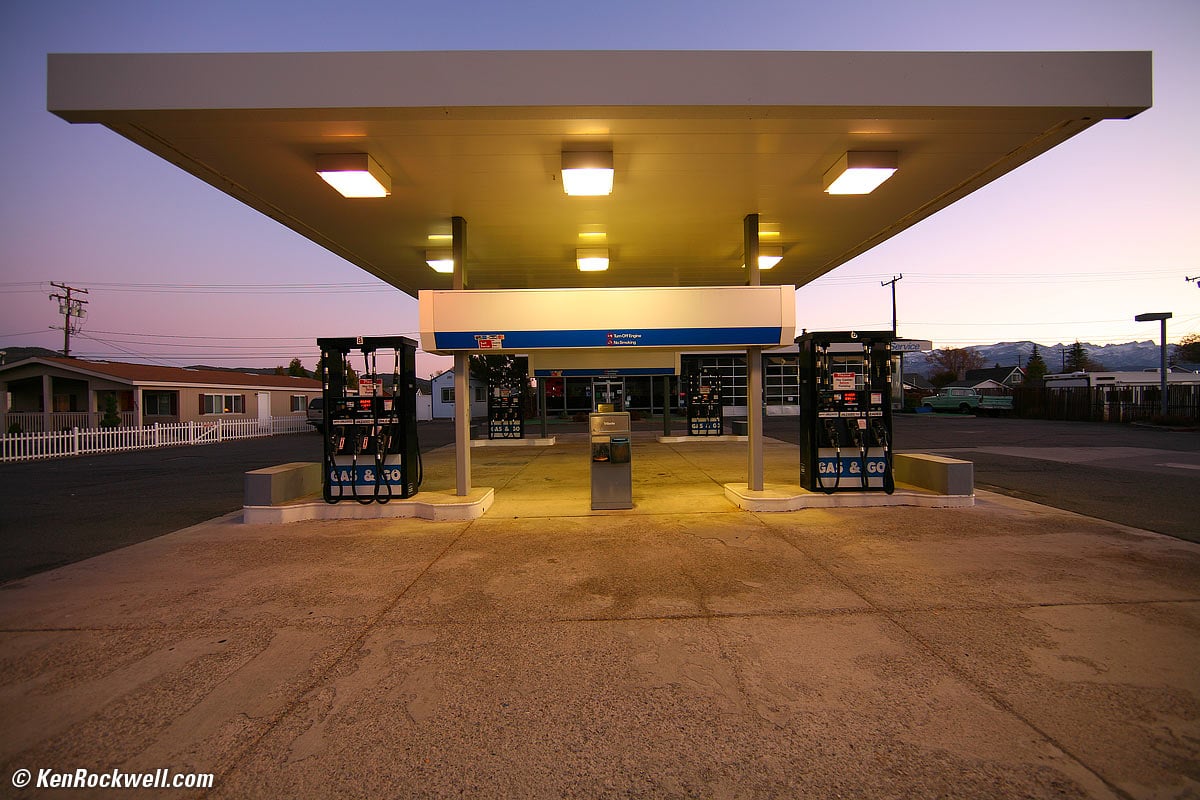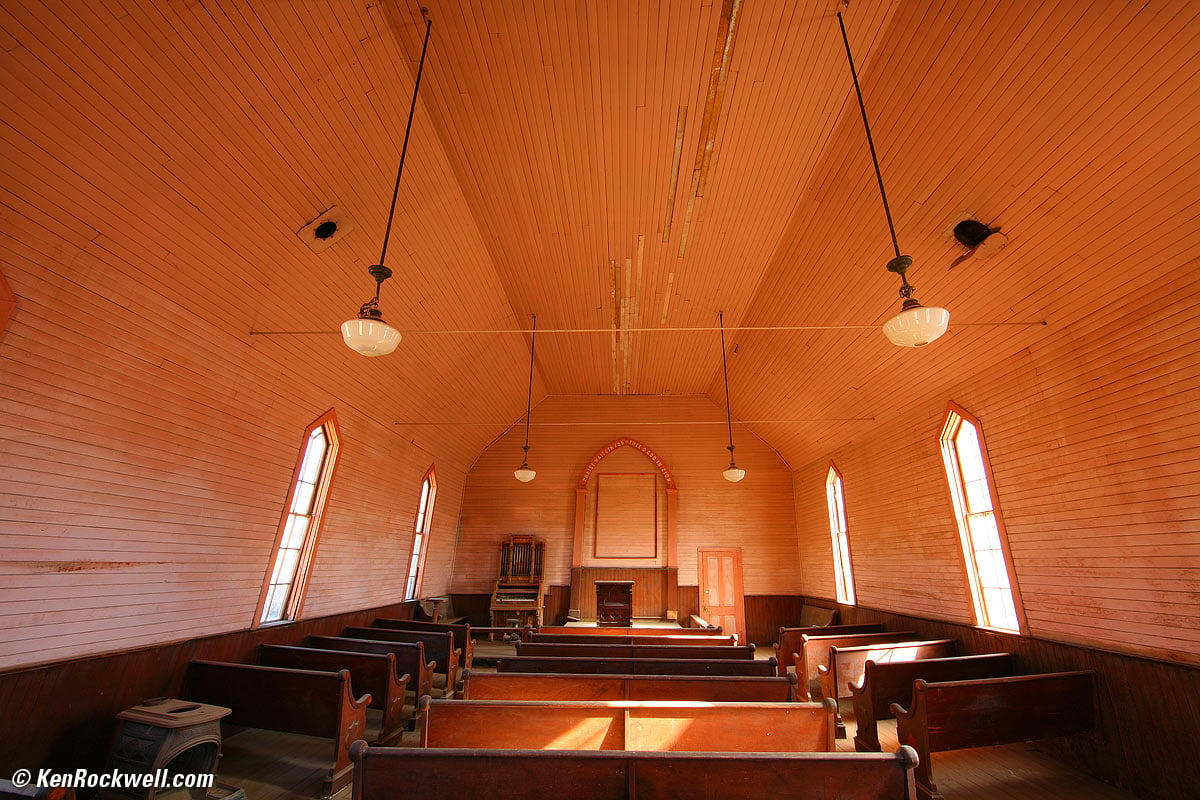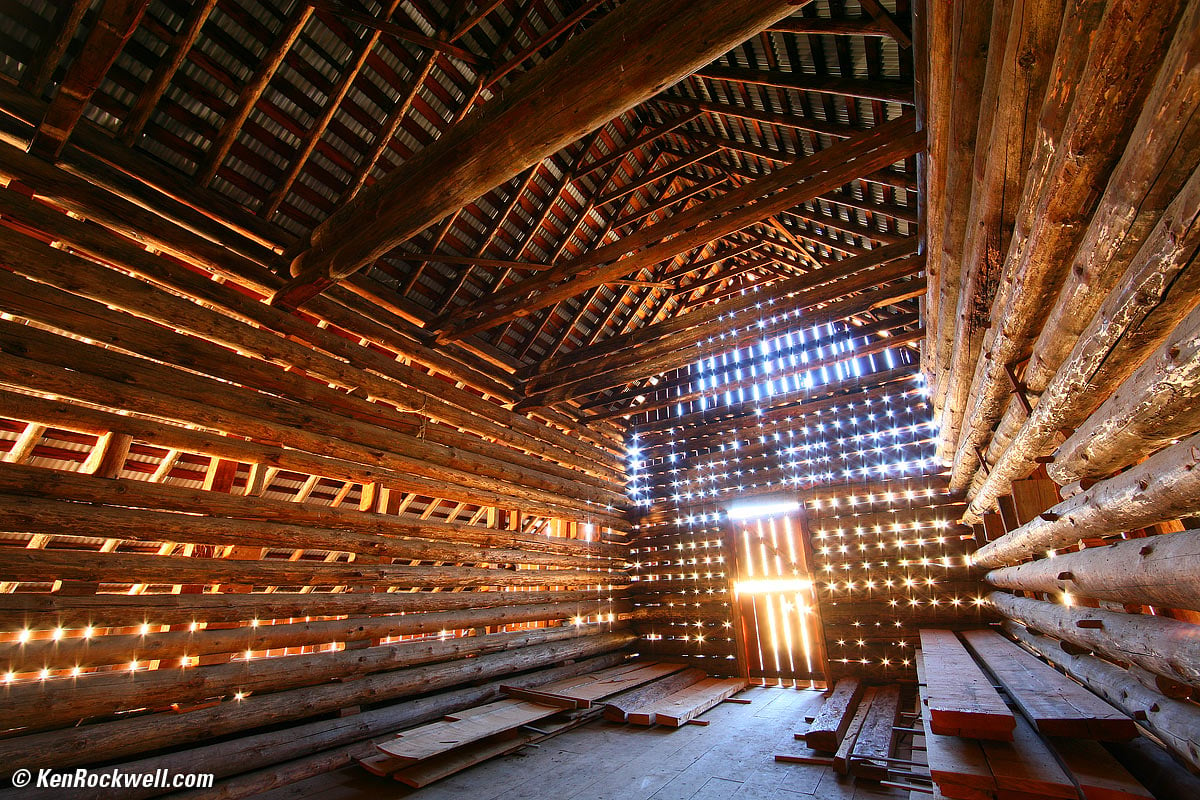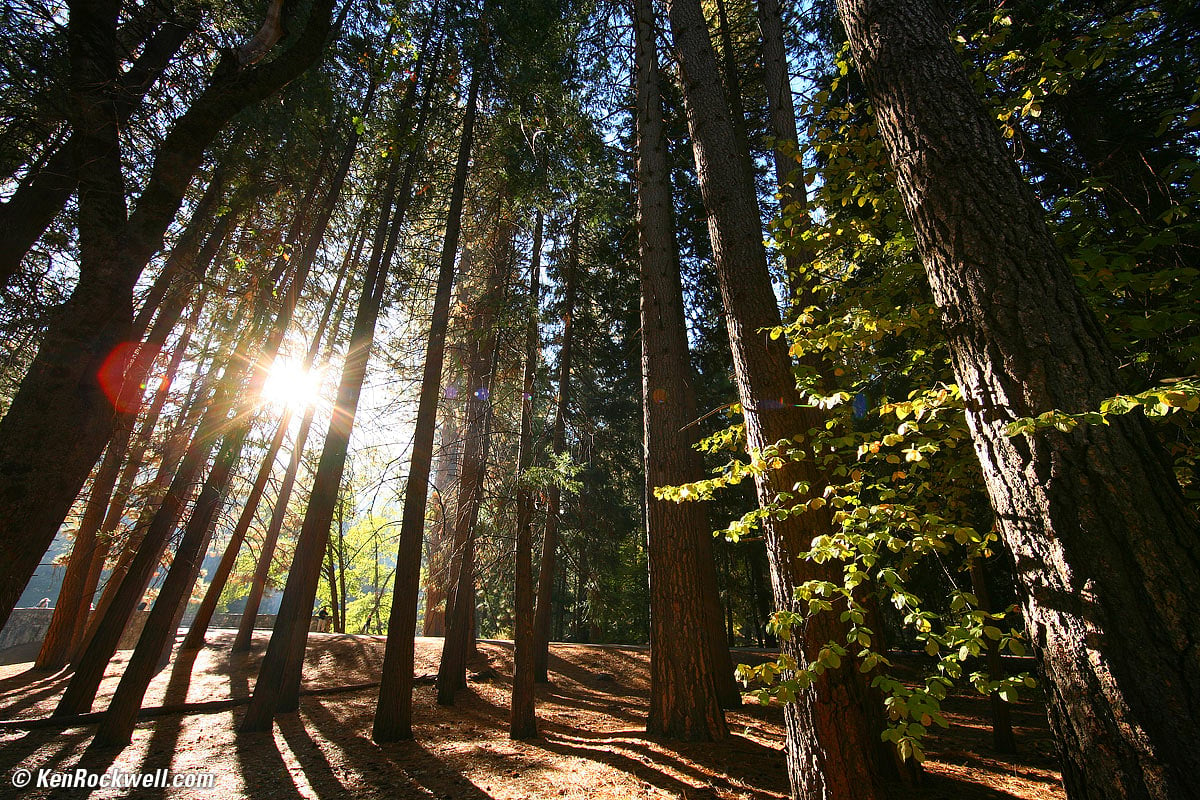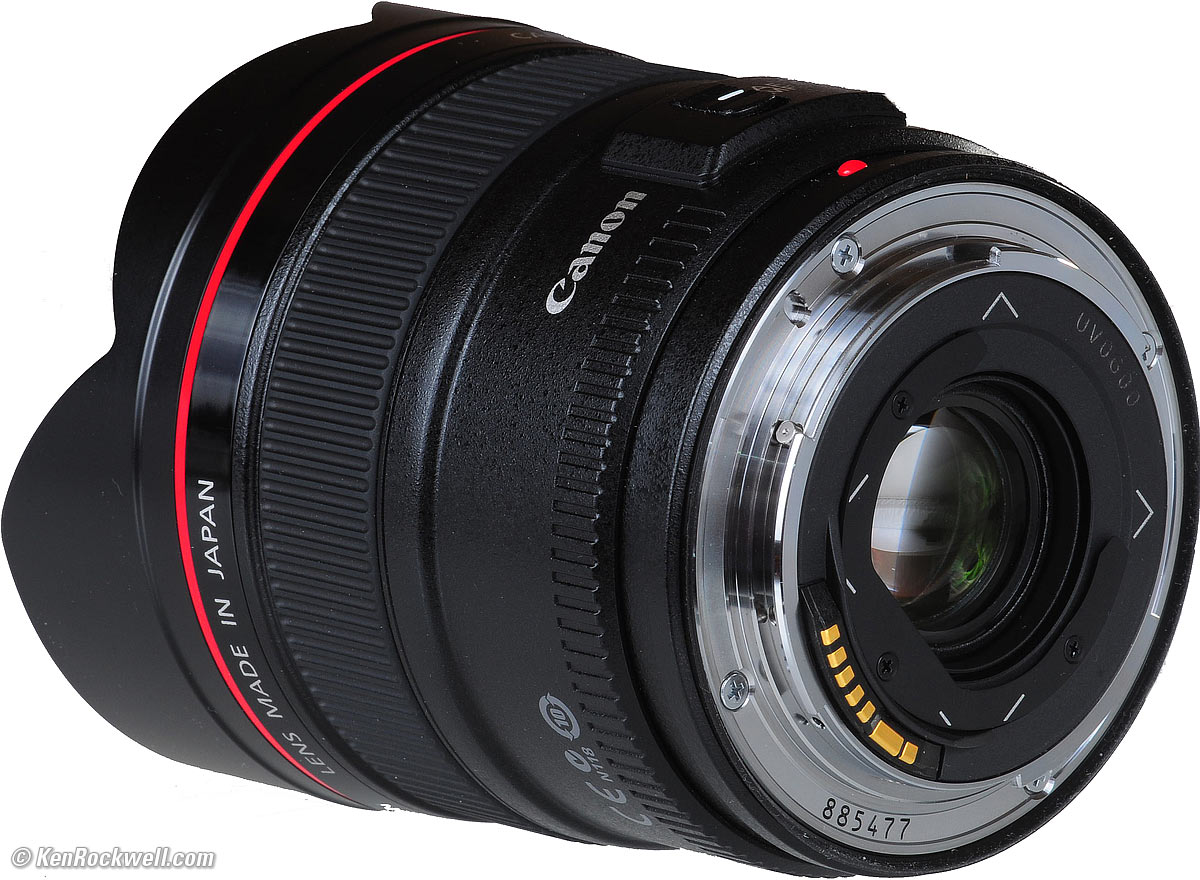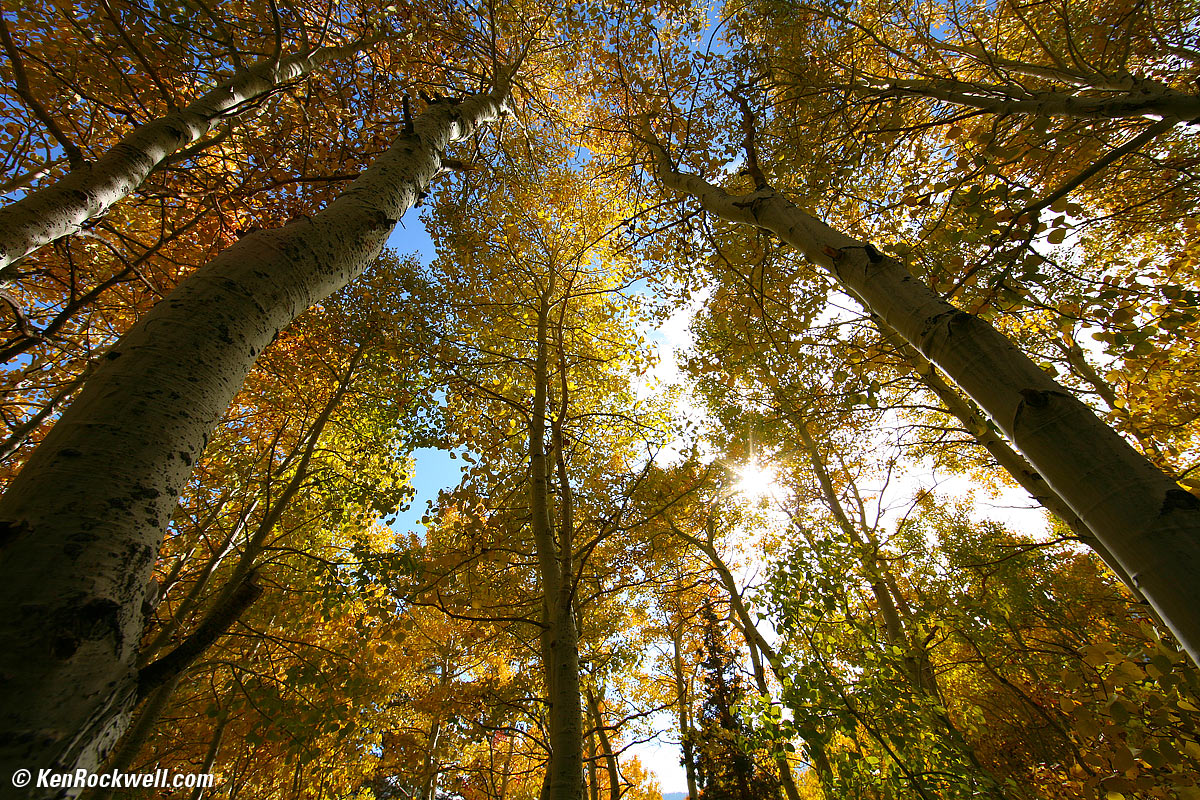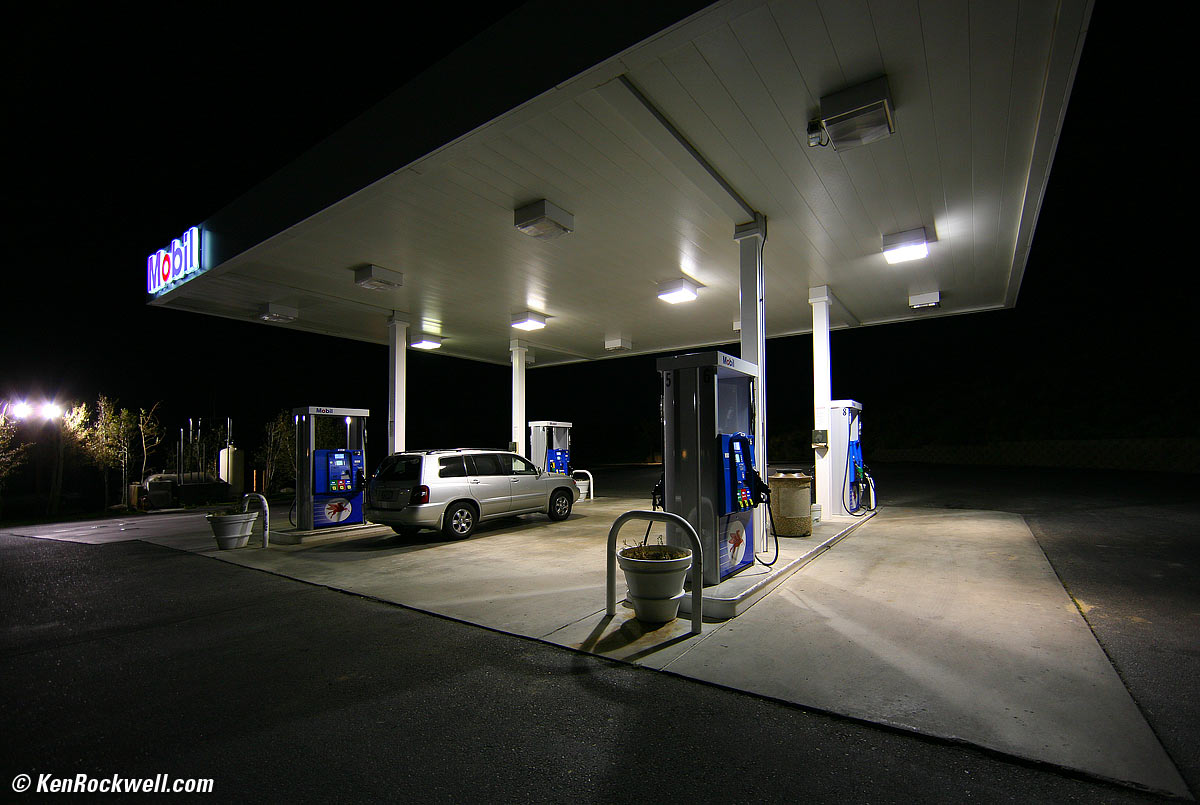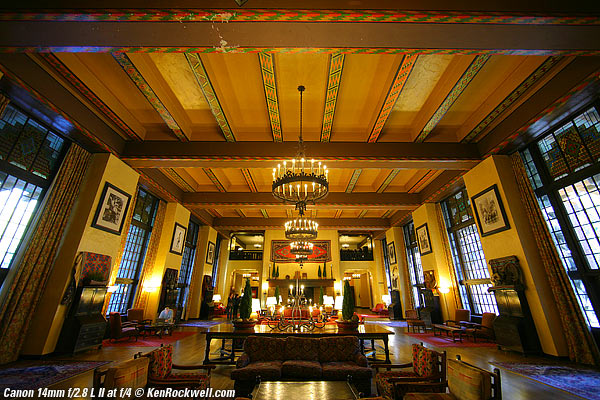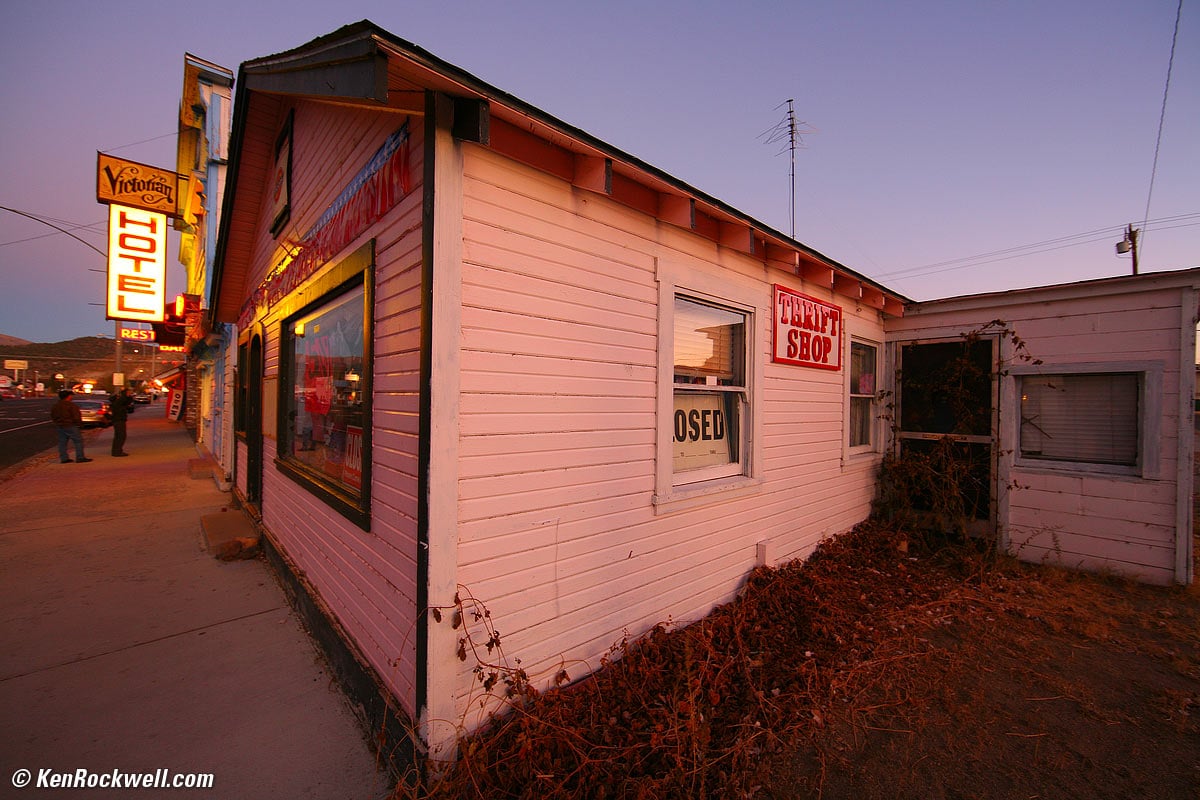Canon 14mm f/2.8 L II
Full-Frame EF Ultra-Ultrawide (2007-)
Top Intro Specs Performance Recommendations
Canon EF 14mm f/2.8 L II (rear gel filters, 22.7 oz./643g, 8" (0.2m) close-focus, about $2,150). enlarge. I got mine at this link to it at Adorama. I'd also get it new at Amazon, at B&H Photo-Video, at Crutchfield or used at eBay (see How to Win at eBay).
This all-content, junk-free website's biggest source of support is when you use those or any of these links to approved sources when you get anything, regardless of the country in which you live. It helps me keep adding to this free website when you get anything through these links — but I receive nothing for my efforts if you take the chance of buying elsewhere. Never buy at retail, since Canon doesn't seal its boxes so you can't tell if it's a used, returned or damaged lens. Thanks for your support! Ken.
April 2017 Canon Reviews Canon Lenses Canon Flash All Reviews
Why fixed lenses take better pictures
Introduction
Top Intro Specs Performance Recommendations
Sportsmen's Inn. f/5.6 at 1/8, hand-held on a Canon 5D at ISO 400. enlarge.
|
I buy only from these approved sources. I can't vouch for ads below. |
Canon's 14mm f/2.8 L II is the best fixed 14mm lens I've ever used. It's much better than Nikon's fixed 14mm lens because this Canon lens has far less distortion, while the Nikon lens is loaded with it.
Today, the Canon 11-24mm zoom is optically superior, but much bigger, heavier and more expensive.
Using 14mm Lenses
Ultra-ultra wide lenses are the most difficult lenses of all to use properly.
To get good results, you have to force yourself to get closer and closer, and push the subject out to the edges. If you don't push yourself, all you'll get is a tiny subject lost in the middle of the frame.
Ultrawide lenses have nothing to do with "getting it all in;" that attitude is the best way to get the worst pictures.
See "How to Use Ultra-UltraWide Lenses" for much more.
Compared to the original EF 14mm f/2.8 L
This new Canon 14mm II is a significant improvement over the original Canon 14mm f/2.8 L. It's also a little bigger and 4 oz. (110g) heavier, and has a completely different front cap system.
This new II is significantly sharper away from the center, and also rectifies the strong lateral color fringing of the first 14mm L. This new II version fixes the strong amber ghost images caused by the sun in the original 14mm, and replaces them with a much dimmer rainbow laser-beam. I often shoot 14mm lenses with the sun in a top corner, and these ghosts occupy a lower corner.
I had hoped Canon would update the dorky six-bladed diaphragm of the original 14mm to a seven-bladed diaphragm, but no. The new lens still has only six blades, and makes stupid-looking six-pointed sunstars just like the old one.
This new II version adds an ass-gasket for sealing against dust and the elements, lacking on the first EF 14mm f/2.8 L.
This new II has a silver "II" on the identity ring after the red "L," and instead of saying "Ultrasonic" in red on the ring, the new II version says "USM" in silver on the ring and says "Ultrasonic" in red on the barrel to the right of the distance scale.
Format
Top Sample Images Intro Format Compatibility Specifications Accessories
USA Version Performance Compared Usage Recommendations More
This is a full frame lens, and I'll be reviewing it as such.
It works on Canon APS-C cameras, but it's a huge waste of money when the Canon EF-S 10-18mm works even better for a tenth the price on APS-C.
Specifications
Top Sample Images Intro Format Compatibility Specifications Accessories
USA Version Performance Compared Usage Recommendations More
Name
Canon calls this the Canon Lens EF 14mm f/2.8 L II USM.
EF: Electronic Focus. All modern Canon lenses focus with a motor in the lens.
L: Expensive as L. No exact meaning other than this being Canon's lingo for lenses with extra durability and weather sealing. L lenses work on all cameras including film and full-frame digital. Canon puts a red band around the front of these. See also Canon L Lenses.
USM: Ultra-Sonic Motor: The focus motor operates silently.
Canon 14mm f/2.8 L II. enlarge.
Focal Length
14mm.
On film and full-frame it's insanely wide and works wonders. Used on a 1.3x camera it gives an angle of view similar to what an 18mm lens would give on a 35mm film camera. On a 1.6x camera it gives an angle of view similar to what a 23mm lens would give on a 35mm film camera. See also Crop Factor.
Optics
14 elements in 11 groups, including two glass molded aspherical elements and two of UD glass. It uses lead-free glass, which means Canon isn't polluting Japan with lead in the dust created in shaping and polishing. (The older 1991-2006 lens has 14 elements in 10 groups, including an aspherical.)
Diaphragm
Only six blades, rounded at the largest apertures.
Close Focus
8" (0.2m), close enough to get your head cut off in an airplane propeller. My original 14mm f/2.8 L is marked to 9.8" or 0.25m.
Bodie. f/11 at 1/2, 5D braced on window sill at ISO 100. enlarge.
Filters
None on front; gelatin slot on rear.
Front Cap
Canon Lens Cap 14, snap-on plastic. details.
Size
3.15" around by 3.7 " long. (80 x 94mm).
My older Canon 14mm f//2.8 L USM is 3.034" around by 3.4" long (77.05 x 87mm), so the new 14mm is bigger. I measure length as extension from flange; I'm unsure how Canon measures the new 14mm.
Weight
22.675 oz. (642.85g), measured, naked.
24.130 oz. (684.1g), measured, with both caps.
22.75 ounces (645g), specified.
My older Canon 14mm f//2.8 L USM weighs 18.98 oz (538.0g), telling us that the new 14mm is even bigger and 4 oz (110g) heavier than the old one, which is already huge.
Included Accessories
Lens Cap 14
Pouch LP1016
Rear Cap E
Cliché. f/11, 5D. enlarge.
Canon Model Number
2045B002.
Announced
August 20th, 2007. Canon announced this new 14mm f/2.8 lens, but only as a tag-along at the bottom of the 1Ds Mk III press release. Why do lenses get the butt-treatment? This is the first new 14mm lens since the last one was introduced in December 1991! This makes me laugh, since personally this 14mm is the most interesting product announced by Canon in years.
Available
Since October 2007.
Price, USA
April 2017: $2,099.
January 2015: $2,150 USA after rebate.
2008: $2,050 USA.
2007: $2,199 USA, $400 more than I paid for my previous 14mm f/2.8 L.
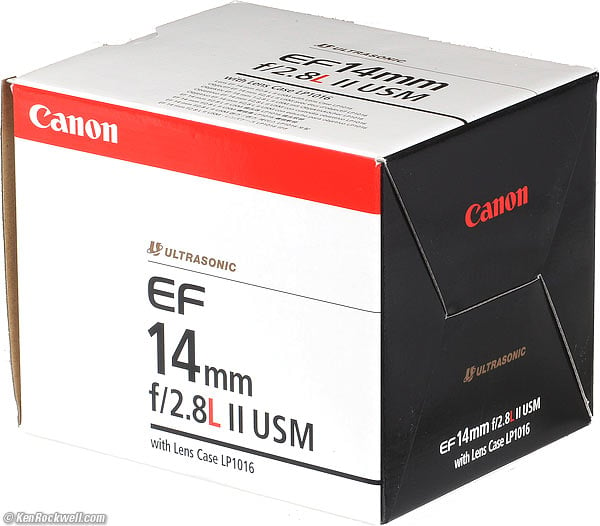
Box, Canon 14mm f/2.8 L II.
Dead Man's Tavern: 14mm lenses can make you dizzy. enlarge.
(see also How to Use Ultra-Ultra Wide Lenses.)
Performance
Top Sample Images Intro Format Compatibility Specifications Accessories
USA Version Performance Compared Usage Recommendations More
Twin Lakes. f/8, 5D. enlarge.
This is a full-frame lens, and that's how I'm testing it.
Overall, this new lens performs so much better than the older 14mm L that it eliminates the need for correction in DxO. This new lens is sharper, has less distortion, less ghosting and less lateral color fringes than the original EF 14mm f/2.8 L.
Victorian Hotel. f/5.6 at 1/13, hand-held 5D at ISO 400. enlarge.
Front Cap
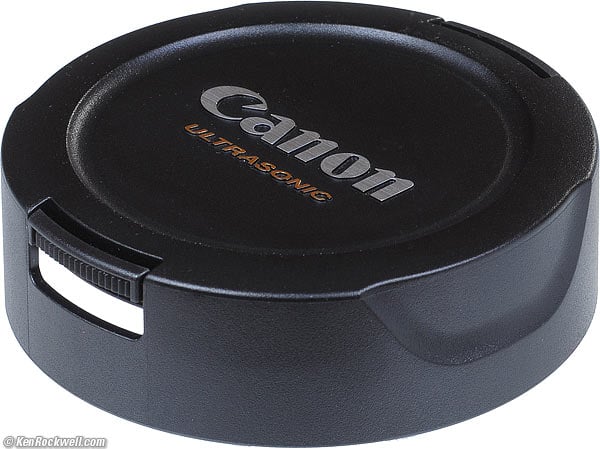
Canon Lens Cap 14.
This may seem silly, but for those of us who actually shoot 14mm lenses, the front cap is important. For instance, Nikon uses a clumsy fake leather sock on their 14mm f/2.8, and a crappy plastic fall-off cap on their newest 14-24mm, neither of which is very good.
Canon's original EF 14mm f/2.8 L used an impressive felt-lined solid billet-aluminum cap, but it still tended to fall off and get lost if you didn't keep an arm over your lens while carried around your shoulder.
This new 14/2.8 II lens uses an excellent snap-on plastic cap. It locks onto the lens, and won't fall off unless you squeeze both opposing tabs towards each other at once. It won't pop off if just one tab gets knocked by accident while carried around. Each tab spring-locks into a groove on the inside of the hood-like portions of the front of the new 14mm lens.
This cap only goes on two ways. It's keyed so that the tabs only align with the top and bottom petals of the lens's shade-like protrusions.
The only gotcha with the new cap is that it doesn't completely seal out dust, and because the insides are hard plastic, this cap will chafe the outer barrel of the 14mm lens with use. Here's what a 14mm lens with very little stick time looks like:
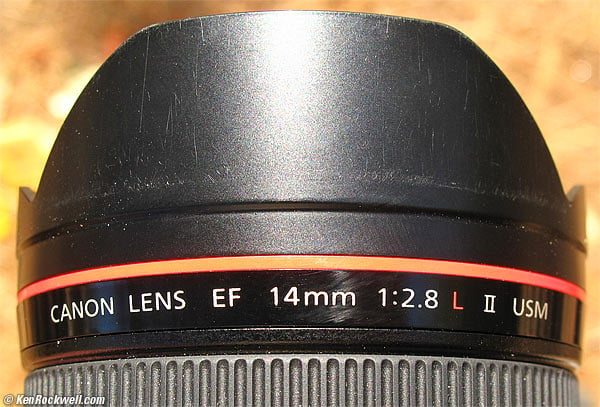
Lens Cap abrasions, Canon 14 2.8.
With time, you'll amass a bunch of little scratches running forward and back, and a much more pronounced wear line circling the lens where the rear edge of the cap contacts it.
I'd suggest trying the LensCoat Hoodie extra-small cap instead. It's specified for lenses between 2-3/4 to 3-1/4" diameter, and this 14mm II is 3-1/8" diameter (the old 14mm is 3" diameter).
Canon EF 14mm f/2.8 L II. enlarge.
Lateral Color Fringes
Bodie. f/11, 5D. enlarge.
There are some slight blue-yellow lateral color fringes in a 5D. Canon doesn't correct this in-camera as do the second-generation Nikons.
This 14mm L II has far fewer lateral color fringes than the original 14mm L, which had very strong green-magenta fringes that required DxO to fix.
Distortion
Wawona Hotel. Canon 14mm II at f/8, Canon 5D. Enlarge.
The 14mm II has very little distortion. It's invisible at normal and far distances, and has minor barrel distortion up close. The only thing you may see in the image above is the variation in lighting of the sky, not any distortion.
This 14mm lens has only one-third the distortion of Nikon's 50mm f/1.4. That's good!
The 14mm II has far less distortion than the 16-35mm L and 16-35mm L II.
Either Canon 14mm f/2.8 is good enough to shoot right out of the box, without needing Photoshop or DxO to fix unintentionally distorted lines.
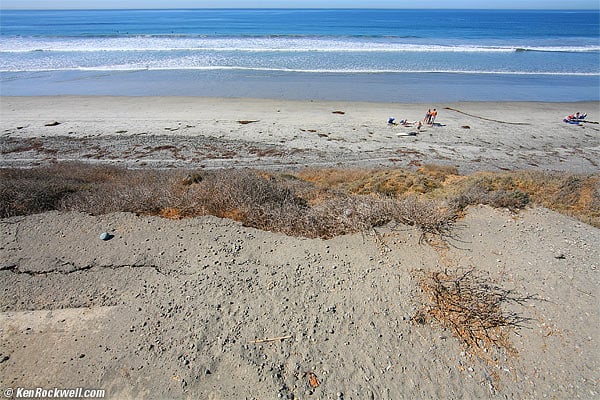
Canon 14 2.8 L II at the beach on full-frame.
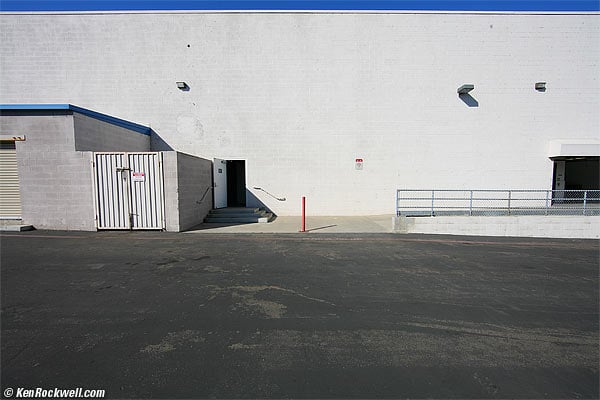
Wall of shame, as shot at f/11 on full-frame.
Either Canon 14mm f/2.8 L and this new 14mm f/2.8 L II have far, far less distortion than the Nikon 14mm f/2.8 or 14-24mm f/2.8 lenses. Canon does it right, and I have no idea how Nikon's 14mm fixed lens wound up with such horrible distortion.
What little distortion is left in the Canon 14mm f/2.8 L II is simple and easy to correct in Photoshop CS2's Lens Distortion Filter using these values. A few pixels of waviness remain after this correction. If you need absolutely perfect correction, use DxO, but last I checked, DxO only has modules for the older 14mm.
Full-Frame and Film |
|
∞ |
+0.45 |
50' (15m) |
+0.50 |
5' (1m) |
+1.20 |
© 2008 KenRockwell.com. All rights reserved.
Sarah Conner's Gas Station, Mexico. Canon 14mm II at f/9, Canon 5D. enlarge.
Sloppy hand-holding led to a tilt which tweaked the pole.
Meat Market. f/11, 5D. enlarge.
Sloppy hand-holding led to a tilt which tweaked the pole in the other direction.
Convict Lake. f/11, 5D. enlarge.
Shot with most other 14mm lenses, these lines would bulge out.
As expected, there's visible falloff at f/2.8, slight falloff at f/4, and none at f/5.6 and smaller.
I'm greatly exaggerating this by shooting a white field; this is only visible with real images at f/2.8, and even then it's not annoying.
Canon 14mm f/2.8 L II falloff on full-frame and film at infinity, no correction.
© 2017 KenRockwell.com. All rights reserved. |
Bridgeport. f/4 at 1/10, hand-held 5D at ISO 100. enlarge.
Bodie Church. f/8 at 1/6, 5D braced on screen at ISO 100. enlarge.
Typical amateur 14mm shot: most of the frame is empty!
Ghosts are much improved over the first EF 14mm, which had big amber images of the aperture appear opposite the sun.
This new 14mm II either has no ghosts, or on rare occasions, will have an off laser rainbow appear where the bigger amber blobs of the original 14mm did.
This 14mm lens' sunstars are dorky six-pointed affairs. This is the biggest flaw with the Canon 14mm. (more about sunstars)
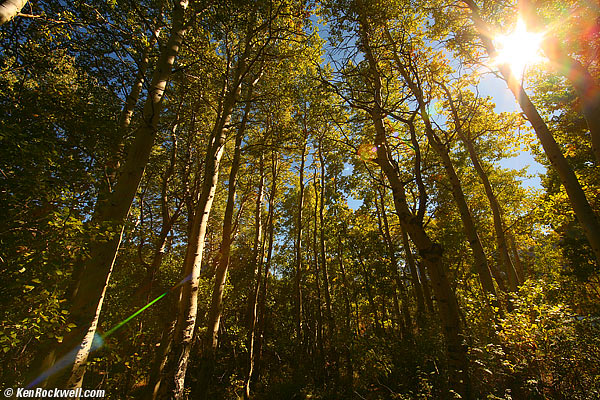
Silver Lake. F11, 5D. This is the rainbow laser flare you sometimes will get.
Barns. f/8, 15 seconds, 5D. enlarge.
Trees behind the Ahwahnee. f/9, 5D. enlarge.
Use on 35mm Film
The Canon 14mm II looks great on Fuji Velvia 50. I shot it on a crappy Canon EOS Rebel G and got fantastic results.
Since the digital nerds who spend too much time looking too closely at image files incentives Canon to bring the 14mm's performance up to levels which look OK on a 13MP camera, it looks super on film with just an 8xloupe.
Be sure to use the rear gel holder for filtration.
Canon EF 14mm f/2.8 L II. enlarge.
Sharpness
Silver Lake. f/11, 5D. enlarge.
This new 14mm L II is still soft in the far corners, and greatly improved throughout most of the image over the previous EF 14mm f/2.8 L.
Optimum aperture is still f/11.
It's nowhere near as sharp as the Nikon 14-24mm f/2.8 AF-S in the corners are wide apertures, but it's the best there is for Canon.
Sharpness is more than sufficient, see Why Lens Sharpness is Over-Rated.
Tioga Mobile Station. f/2.8 at 1/15, hand-held on a 5D. enlarge.
Published MTF
The published MTF is excellent, far sharper in the corners than my original Canon 14mm f/2.8. It's about the same as Nikon's 14mm f/2.8 AF. Nikon's new 14-24mm f/2.8 zoom is rated far better than any of these other three fixed 14mm lenses.
Of course these MTFs are dreams, which mean they are calculated, not measured from real lenses. Nothing is said if the published graphs are monochromatic, polychromatic, or integrated over white light, so they mean very little for comparison to real samples of lenses. Don't lose sleep over any of this.
Compared
Top Sample Images Intro Format Compatibility Specifications Accessories
USA Version Performance Compared Usage Recommendations More
Versus the 16-35mm f/2.8 L II
The 16-35mm f/2.8 L II, at 16mm, is all most people would need. The 14mm lens is for full-time shooters who really look at things in strange ways.
The Ahwahnee., at f/4 with each lens. Roll mouse over to compare.
enlarge 14mm version.
Filters
You can use screw-in 82mm filters with the 16-35mm, but you can't with the 14mm.
You can use rear gel filters with both lenses.
Angle of view
As you can see above, the 14mm takes in a little more. This means I can get a little closer, and get images just a little bit crazier, which is the whole point of wide lenses. This is the reason I prefer the fixed 14mm over the 16-35mm.
Distortion
The 14mm has no visible distortion at normal distances, while the 16-35mm has all sorts of distortion.
Sunstars
The 16-35mm makes great 14-pointed sunstars from its seven-bladed diaphragm, while the 14mm makes stupid-looking six-pointed sunstars from its primitive six-bladed diaphragm.
This is a real flaw in the 14mm, and something I would consider very carefully.
Overall
All this considered, and also considering that the the fixed 14mm costs almost double the price of the 16-35mm zoom, for my style of shooting, I'm far more likely to run around all day with a single 14mm lens on my camera than I am to grab my 16-35mm. 14mm gives me more of the look I want compared to the 16mm end of the 16-35mm.
Bridgeport. f/5.6 at 1/8, hand-held 5D at ISO 400. enlarge.
Recommendations
Top Sample Images Intro Format Compatibility Specifications Accessories
USA Version Performance Compared Usage Recommendations More
We know who we are. 14mm lenses are for the insane, or those who would like their images to look that way. Be sure to read How to Use 14mm Lenses.
The 11-24mm has better optics and goes even wider. It's not that much more expensive, but it is much bigger and heavier.
Normal people have no use for ultra-ultra-wide lenses. Most people will be at least as happy with the much less expensive 16-35mm f/2.8 L II. Ultra-ultra-wide lenses are the most difficult of lenses to use because composition varies wildly just by moving your position a fraction of an inch. You have to watch your edges like a hawk to be sure compositional elements are where you want them.
The Canon 14mm is the widest non-fisheye lens available for full-frame, film, and 1.3x professional Canon cameras.
For 1.6x cameras like the 40D and Rebels, the Canon 10-18mm EF-S is a better choice for one-third the price.
This new II version is much better than the original in terms of ghosting and, if you look at everything at 100%, side sharpness, but if you already own the original 14mm L, I wouldn't go out of my way to buy this one unless you really have issue with the sharpness at the sides, or the two amber ghosts that appear opposite the sun.
Before this one came out, I was perfectly happy shooting my original 14mm at f/11.
But I am crazy, and I will probably be ordering one of these 14mm II lenses for myself. I know I've just got to have it.
I got mine at this link to it at Adorama. I'd also get it new at Amazon, at B&H Photo-Video, at Crutchfield or used at eBay (see How to Win at eBay).
This all-content, junk-free website's biggest source of support is when you use those or any of these links to approved sources when you get anything, regardless of the country in which you live. Canon does not seal its boxes in any way, so never buy at retail or any other source not on my personally approved list since you'll have no way of knowing if you're missing accessories, getting a defective, damaged, returned, store demo or used camera. I use the stores I do because they ship from secure remote warehouses where no one gets to touch your new camera before you do. Buy only from the approved sources I use myself for the best prices, service, return policies and selection.
Thanks for helping me help you!
Ken, Mrs. Rockwell, Ryan and Katie.
© Ken Rockwell. All rights reserved. Tous droits réservés. Alle Rechte vorbehalten.
Help Me Help You
I support my growing family through this website, as crazy as it might seem.
The biggest help is when you use any of these links when you get anything. It costs you nothing, and is this site's, and thus my family's, biggest source of support. These places always have the best prices and service, which is why I've used them since before this website existed. I recommend them all personally.
If you find this page as helpful as a book you might have had to buy or a workshop you may have had to take, feel free to help me continue helping everyone.
If you've gotten your gear through one of my links or helped otherwise, you're family. It's great people like you who allow me to keep adding to this site full-time. Thanks!
If you haven't helped yet, please do, and consider helping me with a gift of $5.00.
As this page is copyrighted and formally registered, it is unlawful to make copies, especially in the form of printouts for personal use. If you wish to make a printout for personal use, you are granted one-time permission only if you PayPal me $5.00 per printout or part thereof. Thank you!
Thanks for reading!
Mr. & Mrs. Ken Rockwell, Ryan and Katie.
